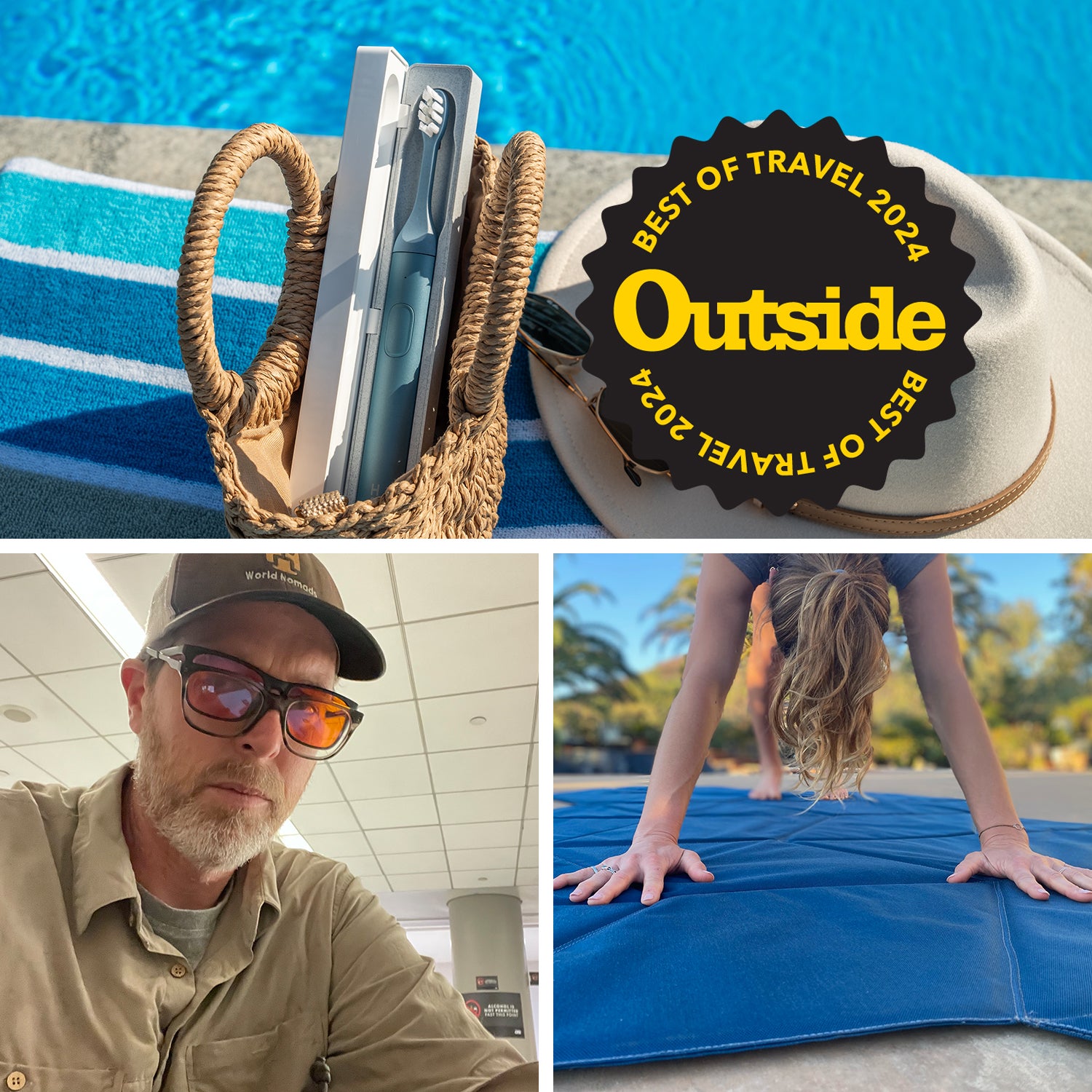Exploring a new destination is fun, but the rigamarole to get there, not so much. Plane travel can be exhausting, packing fraught, and ensuring you have what you need to stay safe and connected during your trip means taking a lot into consideration before you step out the door. Weāve all been there many times.
But travel shouldnāt be so stressful. And those whoāve made a profession out of it, like our travel writers, have many tricks they turn to on every trip that make their journeys bearable, and even enjoyable. āWhat are the hacks we should be using?ā we asked them. Their answersāand their anecdotes about why they changed the way they pack or entertain their kidsāwowed us in these 16 ways.
Gear Hacks
š The Problem: You hate packing a regular toothbrush, and your electric one only plugs into the wall
š« The Solution: The Suri e-toothbrush
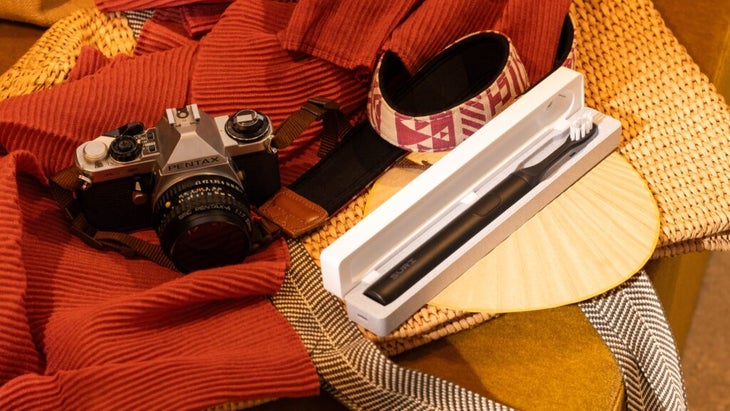
Having to pack a regular old toothbrush is always such a letdown. I went electric a long time ago. At home I use an Oral B, but itās bulky, the battery rarely lasts more than a week, and itās prone to spontaneously buzzing and vibrating in my bag. Awkward.
Then I got a Suri. These electric toothbrushes are sleek, and their slender hard case has a built-in USB-C-powered UV light that disinfects. You can power it in the case, tooānot that youāll likely need to. The company claims the battery lasts 40 days on a single charge. Iāve not personally tested this, but mine worked every day of the two weeks I just spent hopping between Oregon, Colorado and Virginia.
Suri is good for your conscience, too. We throw away upward of four billion regular brushes annually, and most electric versions are still heavy on single-use plastics. Suriās are made of eco-friendly materials like cornstarch and castor beans. The handle is aluminum. All of it can be recycled for free. Now it too just lives in my bag. āTim Neville
š The Problem: Youāve yet to find a sizable carry-on that fits in the overhead compartment or under the seat
š« The Solution: The Cotopaxi 35L
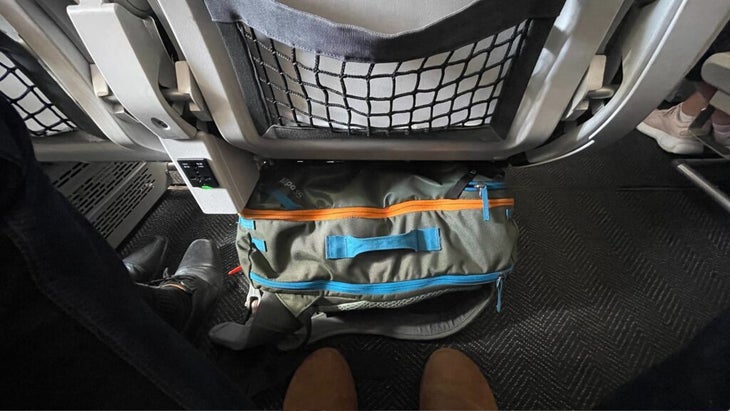
Friends assume Iām a champion bag-packer. They might be right. In 2019 I spent three weeks circumnavigating the globe, with three stops (the South Pacific, Middle East, Scandinavia) in three climates, and all I brought was a carry-on. That was the first time I really put the Cotopaxi Allpa 35L ($225) to the test, and itās since been my go-to bag for almost every travel adventure.
The zippered clamshell design has two interior mesh compartments for clothes and two smaller mesh pockets that stash my notebooks and batteries. Thereās also an exterior laptop sleeve and another pocket that nicely accommodates my toiletry bag and sunglasses.ĢżI can wear the Allpa like a backpack or carry it like a briefcase.
While I love roller bags, a soft-sided backpack is really the right way to fly. I jam the Allpa into those half-size overhead bins on regional flights, and if I donāt pack it to the gills, it fits under the seat in front of me (though The Allpa 28L is better for that). Critically, itās subtly ruggedāits rubberized exterior adds neither bulk nor weight but has repelled snow, rain, and cat pee, as well as endured abuse in boats and one very dusty truck bed on an all-night trip across Zimbabwe. Five years in, mine looks pretty much the same as the day I bought it. āT.N.
š ĢżThe Problem: You canāt fit everything into your suitcase
š« The Solution: Thule packing cubes
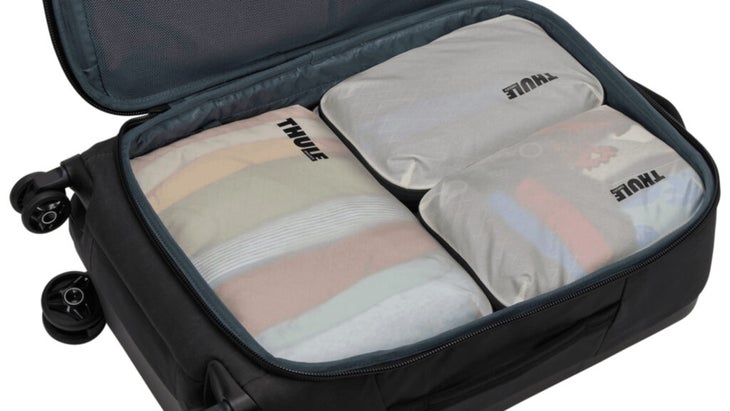
To buy or not to buy packing cubes isnāt a question, because the answer is: absolutely. Not only can I cram more stuff in my luggage, with space-saving cubes of underwear and T-shirts, but having everything organized keeps me sane, and that makes life a million times easier on the road. Instead of rummaging around to find socks, I jump right to that cube. When flying, my family saves on baggage fees by bringing one big suitcase filled with everyoneās cubes to divvy up later. Packing cubes are super handy on river and backpacking trips too.
Iāve gravitated to Thuleās for everything but nicer shirts and pants; those I put into an Eagle Creek Pack-It garment folder that keeps them (mostly) wrinkle-free. Thereās a āclean/dirtyā Thule cube fashioned withĢża soft plastic barrier, perfect for a damp bathing suit, shoes, or dirty clothes. One could argue that cubes are cubes, but Thuleās are sturdy, allowing me to compress a maximum number of items into a dense packet without blowing out the zipper or stitching. āT.N.
š ĢżThe Problem: When you fly, your legs and feet swell uncomfortably
š«ĢżTheĢżSolution: Compression socks
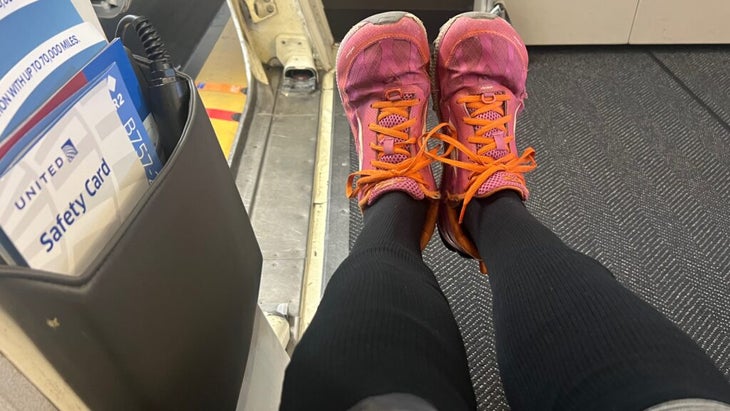
Rarely do I have the luxuryāor luckāof flying to a far-flung destination in a lie-flat bed. Which is why Iāve come to rely on compression socksāwhat I call the poor manās upgrade. Remaining seated for extended periods causes blood to pool in your legs, and that , so by the time you deplane, perhaps your feet have swollen to an alarming degree. Compression socks are the solution; designed to gently squeeze your ankles and calves, they stimulate better blood circulation, which in turn reduces swelling and lowers the risk of a serious condition called .
Bob Bacheler, managing director of the medical-transport service Flying Angels recommends compression socks on any flight of four or more hours. The most important consideration, he says, is a good fitānot too tight or too loose. When I wear compression socks, my legs feel fresh rather than achy or tired.
I like Bombasās colorful Everyday compression socks, which pull up just below the knee and deliver mild compression (15 to 20 mm Hgāa unit used to measure pressure). I tend to get cold on flights, and these thick cotton socks are warmer than others Iāve tried. Levsox compression socks have a snugger fit (20 to 30 mm Hg) but they still donāt feel like theyāre strangling my legs, and their extra arch support makes me feel like that part of my foot is getting a massage when I walk in them (and walk you shouldāthe getting up every two to three hours). To reap the biggest benefits, Bacheler recommends staying hydrated, which increases blood circulation throughout your body, enhancing the effectiveness of the socks. āJen Murphy
š The Problem: You want to practice yoga on your trip, but your roll-up mat is too big to bring
š«ĢżThe Solution: The foldable Kama Mat
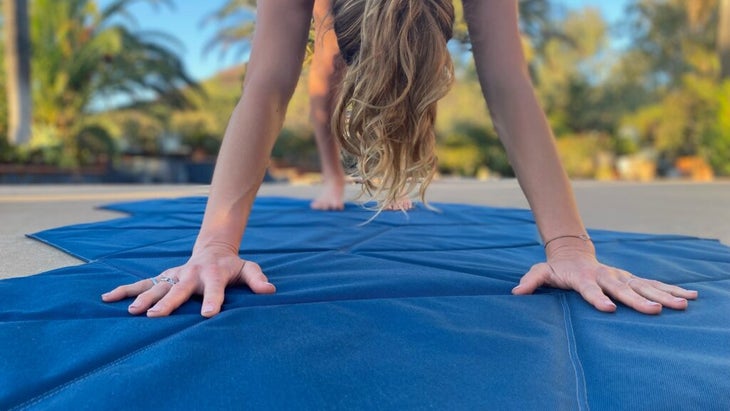
I first saw a Kama mat on a camping trip, when a friend unfolded this origami-style pad and placed it outside her camper van like a welcome mat where visitors were invited to leave their dirty shoes. Folded up, it resembles a large pizza boxāsize trapezoid, but it pulls apart like youāre undoing a paper crane. Laid out, the mat is big enough for a downward dog. The Kama comes in three sizes: the largest option is seven feet by five feet unfolded, while the smallest looks more like a doormat at four by two feet. I was immediately won over by all the possibilities.
My Kama goes everywhere with me now. Itās a picnic blanket I stash in the back of my car, a beach pad that keeps my feet from getting sandy while Iām taking off my wetsuit after swimming or surfing, and a comfy place for my dog to sleep outdoors near the tent. The mat is half an inch thick, with a similar feel to a cushy sleeping pad, and itās way more durable than your average yoga mat, thanks to its tough 100 percent Cordura material, a synthetic made entirely from recycled bottles thatās easy to clean. Youāll want to on how to fold it correctly, unless origami comes naturally to you. Theyāre not cheapāthe smallest size is $98 and the largest $233ābut they last and Iāve yet to find something that compares. āM.M.
Tech Hacks
š ĢżThe Problem: You need a long-lasting, reliable power bank thatās allowed on airplanes
š«ĢżThe Solution: OtterBoxās Fast Charge
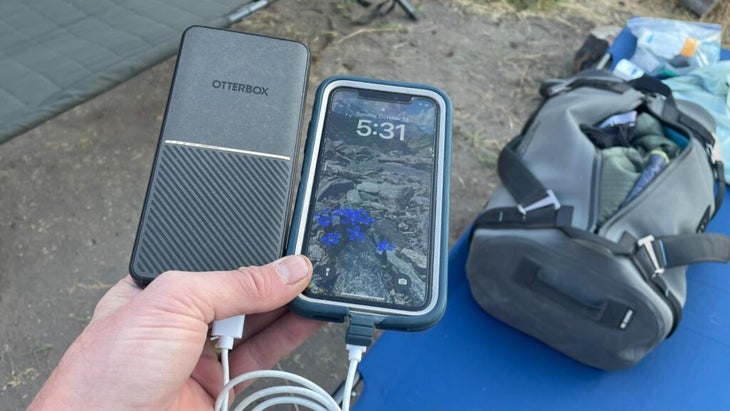
A working phone is indispensable on the road. It stores boarding passes, train passes, and itineraries in . With eSIMS opening the door to cheap data overseas, I now use my phone in places that were too expensive before, like Azerbaijan. All of this to say: I need a good TSA-approved power bank.
OtterBoxās Fast Charge has kept me going for about two years now. It weighs a pound, is the size of a thin brick tile, and stores a significant 20,000 milliampere-hours that you can tap through two ports, a USB-A and a USB-C. Thatās enough oomph to resuscitate a flatlining iPhone 12 Pro at least three times. On river trips, it keeps my inReach satellite device alive for a week.
It charges things quickly, tooā3.6 times faster than your standard five-watt transformer, according to OtterBox. Iāve found that juicing my device for just five to ten minutes can push it well out of the red. In airplane mode I can fully charge my phone in about 45 minutes. When paired with OtterBoxās 72-watt wall charger, the Premium Pro Fast Charge, I can power a laptop and phone simultaneously from one outlet. The only bummer? The power bankās 18 watts canāt bring a laptop back to life. For that I rely on BioLiteās Charge 100 Max, which stores 25,000 milliampere-hours, puts out 100 watts, and is designed with five ports and a wireless charging deck. āT.N.
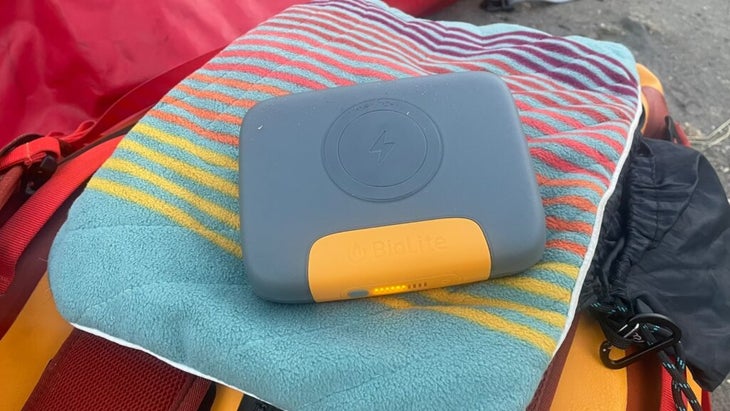
ĢżĢż
š ĢżThe Problem: Your devicesā countless cords and cables arenāt organized
š«ĢżThe Solution: GoTubbs

One of the last things I used to pack, because I hated it so much, were all the cords, adapters, and wall chargers required to travel with my laptop, Kindle, phone, voice recorder, and watch. What a mess and hassle. Iād rather untangle spaghetti.
But Iāve been turned on to plastic containers from Humangear called GoTubbs. Each is circular and transparent, with a fantastic, deep-sided lid that I can squeeze open with one hand. Marketing pictures showed them holding snacks and vitamins, but I saw their true calling instantly: here were the perfect containers for my gadgetsā power cords, chargers, batteries. And today I keep these containers ināyou guessed itāa packing cube.
For something more purpose-built, Eagle Creek recently redesigned its E-Tools Organizer Pro, which combines sleeves with zippered pockets in a clamshell design. Incase has a Nylon Accessory Organizer ($50) with thoughtful features like elastic rings to hold your wall chargers. Both are great and light-years better than rubber bands or a Ziploc. āT.N.Ģż
ĢżĢż
š ĢżThe Problem: You canāt sleep in trains, planes, and automobiles
š«ĢżTheĢżSolution: Earphones (or buds) and Background or Sleep Sounds
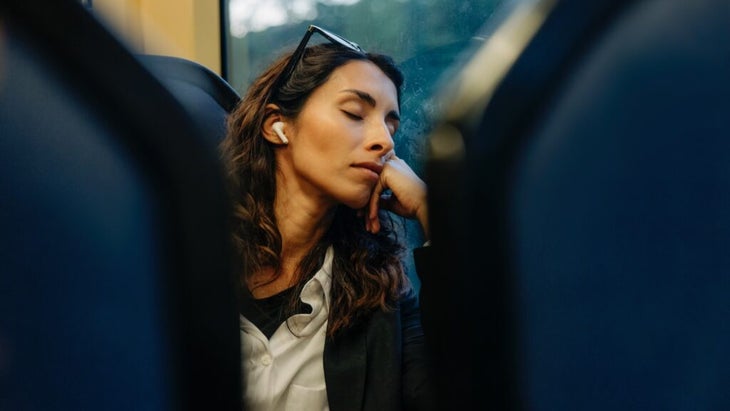
I can doze off anywhere, even as a six-foot-seven giraffe shoehorned into economy. I just need the right tools to help it happen. For years my sleep kit was little more than a neck pillow, ear plugs, and a free eye mask I scored on an upgrade. But now I use AirPod Pro 2ās and my iPhone for a trick Iām about to recommend that keeps me sleeping soundly on anything that moves.
First, find the feature called Background Sounds thatās embedded in any iPhone running iOS 15 or newer. Android phones have . (A quick web search will help you find where, or whether, this feature is located on your phone.) These are basically white-noise machines that provide various pleasing sounds that also mask or absorb any distracting sounds that can make sleep tough.
Once activated, you can choose from eight sounds on an iPhone that range from ābright noiseā to ādark noise,ā as well as natural tracks like the ocean, rain, a stream, and night. Android users can access three sounds or anything from Spotify. Set up with this soothing tool of modern technology piped into my AirPod and Iām out before takeoff. āT.N.
š ĢżThe Problem: Youāre nervous the airlines will lose your checked luggage (it happens!)
š«ĢżThe Solution: AirTags
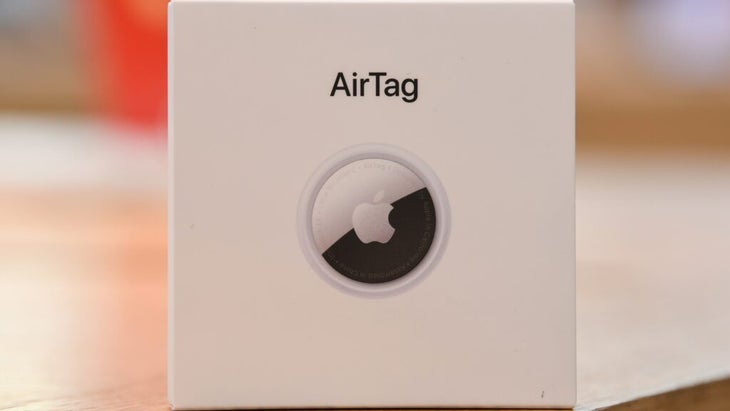
These discrete trackers felt a little creepy to me when they first came out, despite their practical benefits when it came to finding lost keys and bags. But my editors suggested I try them, and I admit to being won over on a recent trip to Africa. I put an AirTag inside a checked bag, launched the Find My app native to iPhones, and watched with glee as it made its way between planes during layovers and eventually to baggage claim. While airlines like United have an app that allows you to track a checked bag each time a handler scans its tag, it isnāt always clear whatās happening. With an AirTag, however, I could see exactly what was going onāand with a weekslong trip ahead of me, that reassurance was very valuable. āT.N.
Website and App Hacks
š ĢżThe Problem: You want to tip your guide after a tour, but you lack local currency or access to an ATM
š«ĢżThe Solution: Bepo
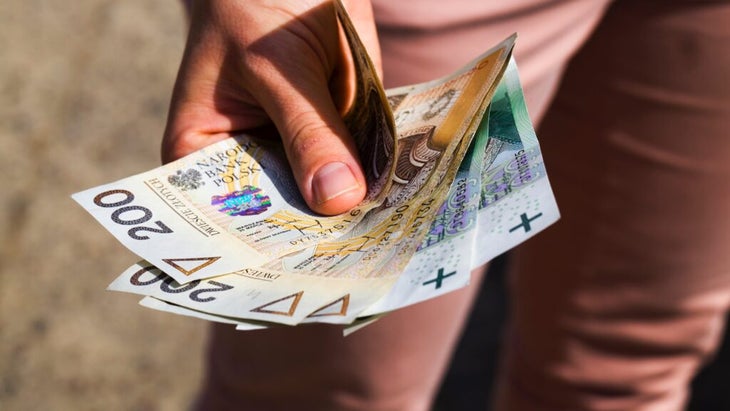
If youāve ever hired a guide, perhaps to help you climb a mountain, ski to a backcountry hut, or paddle down a remote stretch of river, you know itās common practice to give them a gratuity at the end of your trip. American guides are usually happy to accept a Venmo payment as thanks, but internationally, there hasnāt been an easy way to tip guides without getting cash in their local currency. Which often means you wind up struggling to find an ATM, then carrying around a wad of cash.
But I recently discovered , started by a travel-loving entrepreneur named Ian Sweeney in 2022 to offer seamless digital tips to service workers and guides. You can transfer funds via credit card, Apple Pay, PayPal, or Venmo (Bepo charges a 1 percent fee on all transactions), and the person youāre tipping can cash out directly into their own Bepo account.
The site is growing 15 percent each month in the U.S. and Canada, and Bepo intends to expand globally in 2025. Best of all, you donāt have to download yet another app; just head to the website, create a free profile, and then scan your guideās QR code to make a secure payment via whatever method suits you best. Tipping has never been so simple. āMegan Michelson
š ĢżThe Problem: Youāve been camping or road-tripping for days and need a few hours to recharge with hotel amenities
š«ĢżThe Solution: A daycation with ResortPass

When youāre traveling, access to a few nice amenities can make all the difference, be it fast Wi-Fi and a comfortable place to check email, a gym and showers, a hot tub to soak in and relax, or laundry facilities. Basically, if you could just check into a hotel for a few hours and use their perks, life would be golden. Thatās the idea behind , which offers day use to over 1,600 properties across the U.S., Mexico, Canada, and the Caribbean for as little as $25. No membership fees are required; instead, just purchase a day pass the day you need it. Properties include everything from urban hotels to far-flung resorts. Some passes come with upgrade options like spa treatments, access to the fitness center, or poolside cabanas and water parks.
While on a long-haul camping trip through the Pacific Northwest with my kids last summer, I bought a day pass to a hotel in Bend, Oregon, just to get access to a swimming pool and a shower. TheĢżtotal price for three of us was, incredibly, just $35. We spent the afternoon living like high-end hotel guestsāordering food and drinks poolside and using fancy shampoos and fluffy towels in the spaābefore returning to our campsite that night. āM.M.
š ĢżThe Problem: Taking melatonin or eating a big breakfast upon arrival have failed to cure you of jet lag
š«ĢżThe Solution: FlyKitt
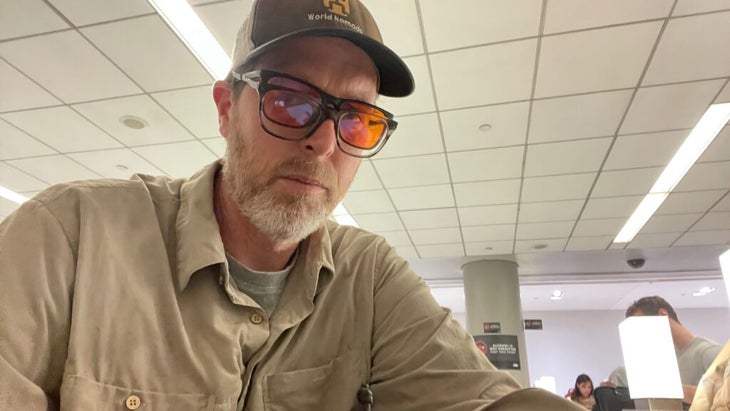
The best way to beat jet lag is to not get it at all, but for most travelers who fly, thatās usually not possible. Or is it?
Fount, a human-performance R&D company, purports to have discovered a way to make jet lag āa choice.ā To make the right one, you need FlyKitt, a system that will have youĢż wearing blue-light filtering glasses, eating supplements, taking naps, and drinking coffee and electrolytes, all at specific times generated by a free app.
Curious, I ordered one for an upcoming trip from my home in Oregon to South Africa. The pouch, the size of a toiletry bag, included everything Iād need for one round-trip journey. I plugged my flight info into the app, and a rather intense routine was laid out for me: starting with the morning of my first flight, I had to consume more than 20 capsules of things like tart cherry powder, vitamin C, magnesium, and omega-3 fatty acids over the course of the next 24 hours. Iād take the last pill the day after I arrived in Johannesburg, nine time zones ahead of home.
The results were shockingāand I say that as someone who has tried all kinds of jet-lag remedies. I had one 15-minute spell of grogginess after arriving in Johannesburg. But upon my return to the U.S., I had zero jet lag. It was as if Iād never left. Typically, Iām wrecked for days, both ways.
Others have tried FlyKitt without success. One reviewer for The Points Guy felt silly wearing the light-filtering glasses in public and skipped that part and also didnāt take all of the supplements. However, another reporter, from the Seattle Times, tried it out and had the same results as I did. I worried that consuming 41,667 percent of vitamin B12ās daily value might upset my stomach, but it didnātāand a doctor later reassured me that this dose isnāt dangerousāso I stuck to the routine. I certainly plan to use FlyKitt again. āT.N.
š ĢżThe Problem: Getting an infection in a remote place, days or miles from medical help
š«ĢżThe Solution: Carry amoxicillin
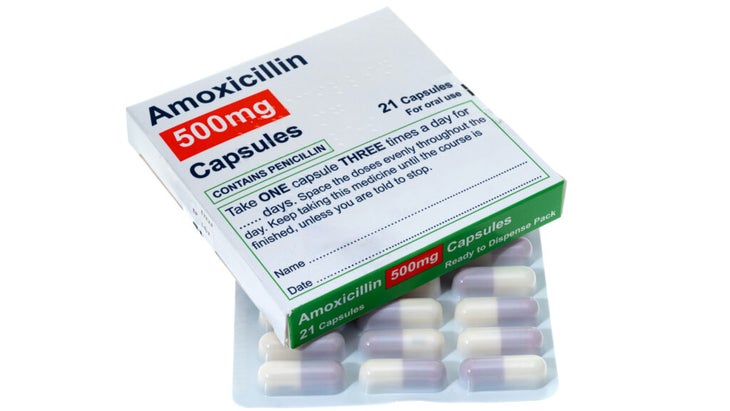
In general, Iāve never needed antibiotics, but there was a time that my kid did, and I didnāt have them. Iām not doing that again. Once, on a three-day float trip down Oregonās remote John Day River with family and friends, my 11-year-old curled up in the bow and went to sleep for the entire morning. This was worrisome. She loved river trips and typically wanted to spend every minute kayaking.
That afternoon, pain set in. She complained that it felt like an ice pick was chiseling away at her skull below one eye and above her teeth. My wife and I pumped her full of Tylenol and Ibuprofen, but nothing helped. Then her face began to swell.
Iām deeply wary of using any medicine willy-nilly, and Iām no doctor, but I knew she needed antibiotics. Decades before, on a remote island in the Philippines, Iād languished for a week with a ruptured eardrum that was horrifically infected. That could have been avoided with antibiotics. And fortunately for travelers, in many countries, you can walk into a pharmacy, explain your symptoms, and walk out with what you need. But occasionally, we find ourselves seriously sick in remote locations and in need of powerful medicine, like my daughter that day on the river.
We eventually got her to a hospital, where she was diagnosed with a tooth abscess. Sheād need a root canal, but amoxicillin cut the pain quickly. And thatās why I never travel without it now. For antibiotics in the U.S., youāll need a doctorās prescription, so I suggest making an appointment ahead of time if you know youāll be somewhere remote and are concerned about medical resources in that area and no better recourse. In my experience, itās worth asking for more than youāll need to keep stashed in your Dopp kit. āT.N.
Kids Entertainment Hacks
š ĢżThe Problem: You’re road-tripping with the kids and want them to enjoy the scenery without screens
š«ĢżThe Solution: Play just the audio of their favorite film
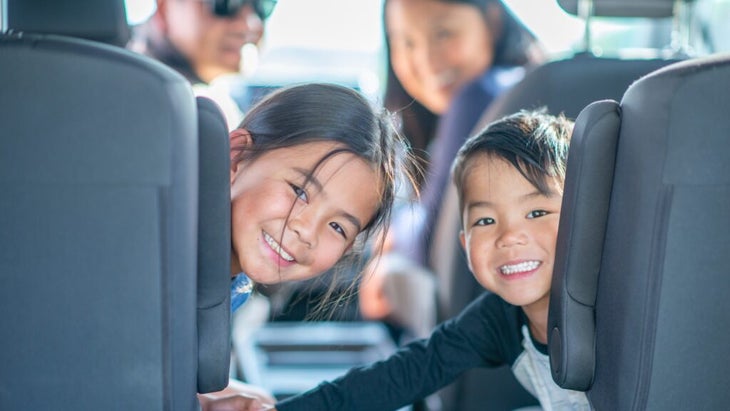
Playing movies on road trips has become a staple in my family. But not watching themālistening to them. When my daughter was really young, this kept her entertained, and my wife and I loved how it stoked her imagination without a screen. The trick was to download a favorite film, like Puss in Boots, Kung Fu Panda, or. Penguins of Madagascar. Because sheād already seen it a million times, she could picture it entirely by sound: Thatās Rico eating the snow globes. Thatās the penguins bouncing in the bouncy house. Other forgettable sounds became hysterical, like a chicken clucking after Kevin Hartās character explodes in Jumanji.
This hack isnāt just for kids. I use it myself on long drives at night when Iām tired of podcasts. A favorite? Interview with a Vampire. The gurgling, slurping sounds; Brad Pittās breathiness; and Christian Slaterās nasalness are all so bad itās incomparably greatāmaybe even better than watching it on screen. āT.N.
Airline Hacks
š ĢżThe Problem: Your flight is delayed or you have a general complaintĢżabout your carrierās service
š«ĢżThe Solution: Pipe up when things go wrongāit often pays off
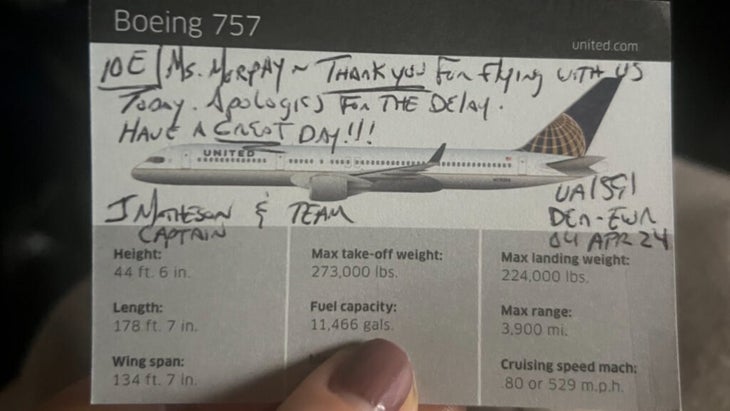
Over the past year, airfare has , but airline reliability has plummeted. According to the U.S. Department of Transportation, of domestic flights were delayed or canceled in the first half of 2024. Only 50 percent of the 63 flights Iāve taken this year left on schedule. Whatās your recourse?
First, know your rights: the Department of Transportation posts a listing the services or amenities domestic airlines promise clients affected by delays and cancellations. Armed with this information, you can then reach out to a representative of your air carrier and ask for compensation. Itās worth noting that every major U.S. carrier offers meal vouchers for delays of three hours or more (talk to your gate agent). Alaska, JetBlue, and Southwest provide a travel credit or voucher for a delay of more than three hours. Only Alaska, however, promises frequent-flier miles in addition to a travel credit.
Things should improve in the next five years, thanks to a new federal regulation requiring airlines to refund customers, or offer credits that last up to five years, for flight delays greater thanĢż three hours for domestic travel and six hours for international trips. Until then, a quick email complaint can go a long way, Iāve found, particularly with United Airlines. It takes less than three minutes to fill out and submit a grievance, whether itās a delay or annoying hiccups like a broken seat that wonāt recline or spotty Wi-Fi. Nine times out of ten, I receive some type of compensation; in fact, last year I was awarded close to 20,000 miles, earned nearly $2,500 in Iām-sorry vouchers, and was even refunded the $8 I spent on faulty Wi-Fi. I appreciate this service. It takes some of the sting out of plans gone awry āJ.M.
š The Problem: You want to travel with your own bicycle but donāt want to pay hundreds to check it
š«ĢżThe Solution: Choose an airline that lets your bike fly free
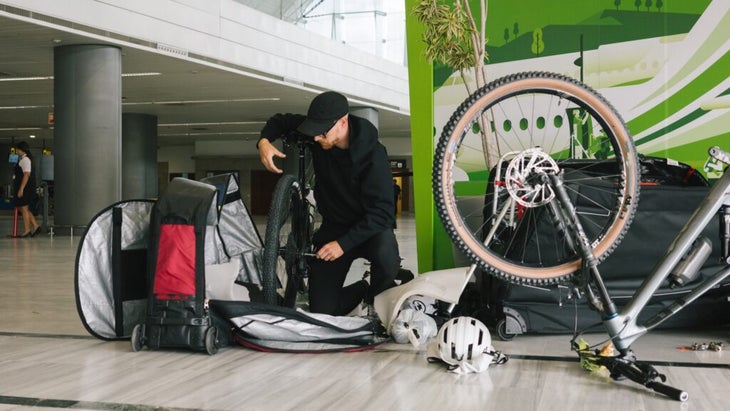
Airlines have mutilated a number of my surfboards, so Iāve never been willing to gamble on flying with my much pricier road bike. Iām far from a pro, and rentals are way better than they used to be; plus, I like to support local bike shops. But I know that serious cyclists suffer separation anxietyāand for you I have intel.
If you donāt want to be charged an oversizeoverweight fee of upward of $200, you need to make sure your rig and its box weigh 50 pounds or less and are smaller than 80 inches. A nice carbon road bike tends to weigh between 17 and 20 pounds. Factor in a light case and remove the front wheel, and you can just make the cut.
But the airline beloved by many cyclists bringing bikes is Southwest. Itās the only domestic airline that grants two free checked bags, regardless of loyalty status. If your bike meets the proper dimensions (62 inches or less and less than 50 pounds), itās counted as a free checked bag.
Itās also worth considering Delta and United if you have status with those airlines. On Delta, those with Medallion status or Delta Amex cardholders can check a bicycle for free if it meets dimensions (62 linear inches) and itās the sole piece of checked luggage. On United, status members are granted an extra 20 pounds per checked bag, which can make a difference if youāve sprung for a hard-shell case to keep your beloved bike free from dings. āJ.M.
Tim Neville and Megan Michelson are ¹ś²ś³Ō¹ĻŗŚĮĻ contributing editors, and Jen Murphy is a longtime ¹ś²ś³Ō¹ĻŗŚĮĻ correspondent. All spend weeks of the year traveling around the country and abroad and reporting back to us. Neville recently recounted his scary multi-night stay in a dark cave in Oregon, Michelson rounded up the best outdoor festivals, and Murphy wrote about the countless ways to explore Costa Rica.Ģż
Looking for more great travel intel?




